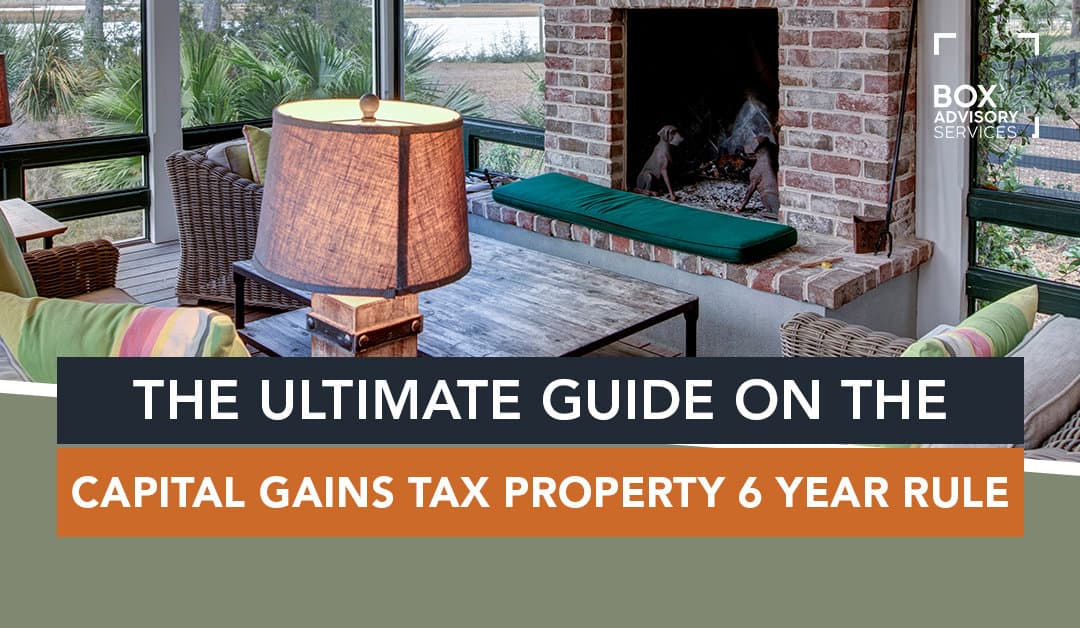
BY
|
The Ultimate Guide on the Capital Gains Tax Property 6 Year Rule
A lucrative way to maximise the value of your investments is to be aware of all the tax exemptions and concessions made available to you – especially the capital gains tax property 6 year rule.
Yet, we find that many property investors aren’t adequately informed of the significant benefits of the CGT property rule because they don’t necessarily hear about it from their real estate agent or mortgage broker.
To help you get saving, we’ve put together this ultimate guide to show you the steps you need to take to reduce (or even avoid) your capital gains tax liability at the time of selling your property.
What is Capital Gains Tax (CGT)?
Before delving into the capital gains tax property 6 year rule, it’s important to understand the basis of capital gains tax and why you’re liable to pay it.
According to the Australian Tax Office (ATO), if you make a profit on the sale of your investment property, that profit is considered a capital gain and must be declared on your income tax return.
The tax you have to pay on your capital gain is known as capital gains tax or CGT.
Fortunately, the ATO allows investors to either avoid capital gains tax liability altogether; or at least significantly reduce it.
These exemptions include:
- The principal place of residence (PPOR) exemption
- The capital gains tax property 6 year rule – which we will be discussing in this article.
- The 50% CGT discount applies if you’ve owned your property for one year or more before selling it.
- The six-month rule – suppose you’ve bought a new home and haven’t been able to sell your old home. If that is the case, the ATO will allow you to hold both properties as your PPOR for up to six months so that you have some time to dispose of the old property.
For more information on how you would calculate your capital gains tax liability, make sure to check out these three simple methods.
What Is Your Principal Place of Residence?
For context purposes, it’s also worth understanding what a principal place of residence is (PPOR).
If you own property simply to live in as your family home, that property will be your principal place of residence.
Because you don’t generate an income from the property you reside in, you’ll be exempt from paying capital gains tax once the CGT event has occurred.
There are, however, certain eligibility criteria that you have to meet to satisfy the ATO’s primary place of residence exemption:
- you must live in the property for the full duration that you’ve owned it;
- you generally keep your possessions at this property;
- you use the address to receive your postal mail; and
- all the property’s utility accounts are in your name.
If you have purchased a property for investment purposes, you’ll want to be generating an income from that property. So, you won’t meet any of the PPOR eligibility criteria and you’ll need to consider alternative methods of reducing your capital gains tax liability.
What Is the Capital Gains Tax Property 6 Year Rule?
According to the capital gains tax property 6 year rule, you can use your investment property as if it was your PPOR for a period of up to six years and still rent it out to generate an income.
If you sold your investment property within those six years, your property will be considered your PPOR for tax purposes and you won’t be liable to pay capital gains tax.
So, just like home-owners who sell their family without prompting capital gains tax, you, as a property investor, can sell your property and not have to pay CGT through utilising the capital gains tax 6 year rule.
Example:
In 2017, Larsa bought a property in Melbourne. She bought the property for the purposes of living in it, so it was considered her primary place of residence. The home has been her main residence for the full period that she has owned it.
At this point, she had owned her family home for two years.
After living in Melbourne for most of her career, Larsa got an exciting new job opportunity In 2019. The new position was, however, based in Queensland.
Because her initial contract was only dated for one year, she decided not to sell her property in Melbourne. So, she maintained this home as her PPOR and moved in with a friend living in Brisbane city.
As a result, she didn’t treat any other house as her PPOR. In the meantime, to avoid having her Melbourne property stand empty, she decided to rent it out.
It’s been about two years now, and Larsa loves her job in Queensland and has decided she would like to settle there indefinitely. So, she opted to sell her Melbourne home and start looking for property in Brisbane.
Through the application of the capital gains tax property 6 year rule, she was able to sell the property without having to pay CGT.
If Larsa decided to not rent out the home, and treat it as a vacation home for when she went to Melbourne to visit family and friends, she would still qualify to claim the capital gains tax property 6 year rule exemption.
Could The Capital Gains Tax Property 6 Year Rule Apply More Than Once?
Yes, because each period that you don’t principally reside in your family home is handled as separate cases.
In other words, suppose Larsa (in the example above) moved from Melbourne to Queensland and then back to Melbourne only to eventually settle in Sydney. If that is the case, the period that she was in Queensland is separate from the period that she was in Sydney.
So, the capital gains tax property 6 year rule reset each time she moved back home, provided that she wasn’t away from her Melbourne property for more than six years at a time.
The ATO has not specified how many times the CGT rule would reset, so there is no limit on the number of times you can claim the exemption.
Can Foreign Residents Take Advantage of the Capital Gains Tax Property 6 Year Rule?
Unfortunately not.
As of 1 July 2020, foreign residents are not eligible to claim the capital gains tax property 6 year rule on the occurrence of a CGT event (i.e. if they sell their property).
Key Takeaways
If you find yourself in a similar situation to Larsa (in the example above) and want to take advantage of the capital gains tax property 6 year rule, here’s what you need to know:
- hold the property in your name and not in a company or trust’s name;
- make sure that your property remains your primary place of residence (you can’t have more than one PPOR);
- don’t vacate your PPOR for more than six years and then decide to sell it – sell it within six years to take advantage of the capital gains tax property 6 year rule; and
- consult with a qualified tax agent or accountant if you don’t meet the capital gains tax property 6 year rule because there are various other concessions available to reduce your CGT liability.
At Box Advisory Services accountants are qualified tax agents who can help you navigate through significantly reducing capital gains tax on your property.
You can book a FREE consultation with us to see how we can help you.



